Rawbank SARL forecast that its lending to the Democratic Republic of the Congo’s (DR Congo) mining industry would rise more than 20 percent to more than US$1 billion this year, buoyed by rising demand and strong prices for the country’s strategic minerals.
The bank’s mining-linked loan book increased to US$820 million last year, nearly doubling its credit offerings from the year before, said Etienne Mabunda, commercial director at the Kinhsasa-based lender.
The figure includes credit to mining companies, subcontractors and salaried workers at large firms, he said.
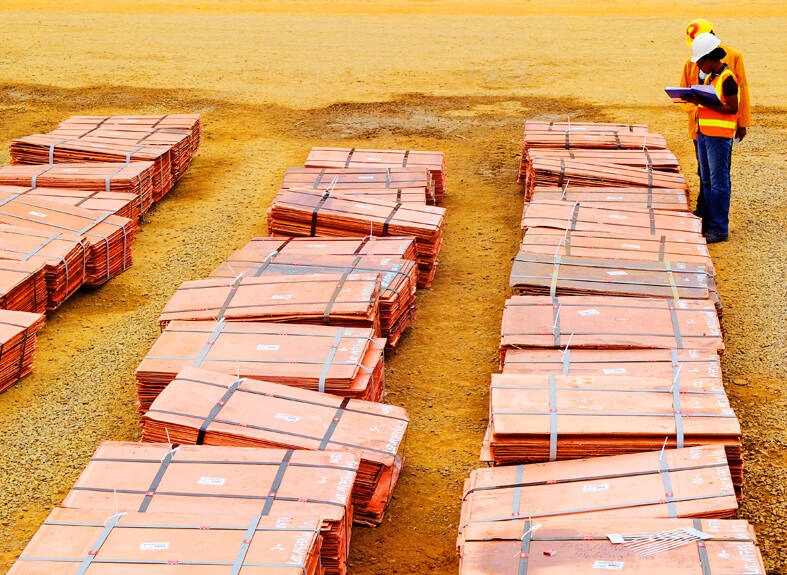
Photo: Reuters
High mineral prices and a recent law requiring more Congolese to work as subcontractors in the industry led to “major investments” in the nation’s copper, cobalt, gold, tantalum, tin and tungsten industries last year, Mabunda said on Thursday in a written response to questions.
The transition to greener energy has led to a scramble for minerals needed to manufacture electric vehicles, solar panels and turbines. The DR Congo provides more than two-thirds of the key battery-mineral cobalt and is one of the world’s largest copper producers.
The government is also looking to develop chrome, nickel and lithium deposits, Congolese President Felix Tshisekedi said last week.
Ivanhoe Mines Ltd, CMOC Group Ltd and Eurasian Resources Group SARL are all expanding their operations in the DR Congo, while BHP Group and Anglo American PLC have considered entering the market, which has a risky reputation because of a history of rampant corruption.
“I think Central Africa is in its primacy in terms of its current ability to provide these metals and minerals we need,” Anglo American CEO Duncan Wanblad said in an interview in Cape Town on Monday. “If policy works, then there’s no reason why a company like us can’t be looking in those sorts of places.”
Gold for April delivery fell US$4 to US$1,874.50 an ounce, down 0.11 percent from the previous week.
In other commodities:
‧ Silver for March delivery fell US$0.06 to US$22.08 an ounce, dropping 1.47 percent for the week.
‧ March copper fell US$0.08 to US$4.02 a pound, down 0.99 percent weekly.
Additional reporting by staff writer, with AP
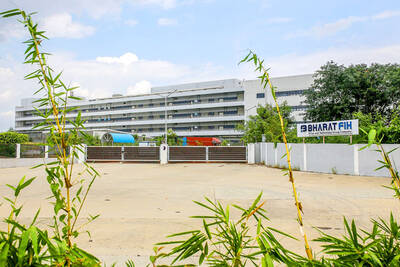
SETBACK: Apple’s India iPhone push has been disrupted after Foxconn recalled hundreds of Chinese engineers, amid Beijing’s attempts to curb tech transfers Apple Inc assembly partner Hon Hai Precision Industry Co (鴻海精密), also known internationally as Foxconn Technology Group (富士康科技集團), has recalled about 300 Chinese engineers from a factory in India, the latest setback for the iPhone maker’s push to rapidly expand in the country. The extraction of Chinese workers from the factory of Yuzhan Technology (India) Private Ltd, a Hon Hai component unit, in southern Tamil Nadu state, is the second such move in a few months. The company has started flying in Taiwanese engineers to replace staff leaving, people familiar with the matter said, asking not to be named, as the
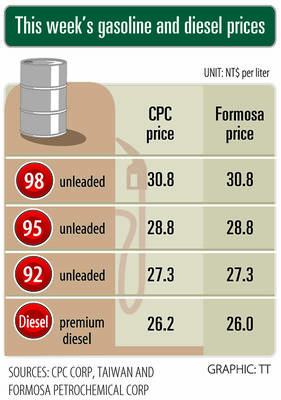
The prices of gasoline and diesel at domestic fuel stations are to rise NT$0.1 and NT$0.4 per liter this week respectively, after international crude oil prices rose last week, CPC Corp, Taiwan (台灣中油) and Formosa Petrochemical Corp (台塑石化) announced yesterday. Effective today, gasoline prices at CPC and Formosa stations are to rise to NT$27.3, NT$28.8 and NT$30.8 per liter for 92, 95 and 98-octane unleaded gasoline respectively, the companies said in separate statements. The price of premium diesel is to rise to NT$26.2 per liter at CPC stations and NT$26 at Formosa pumps, they said. The announcements came after international crude oil prices
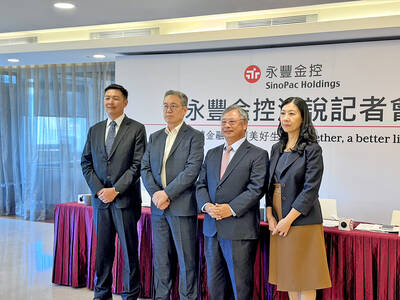
SinoPac Financial Holdings Co (永豐金控) is weighing whether to add a life insurance business to its portfolio, but would tread cautiously after completing three acquisitions in quick succession, president Stanley Chu (朱士廷) said yesterday. “We are carefully considering whether life insurance should play a role in SinoPac’s business map,” Chu told reporters ahead of an earnings conference. “Our priority is to ensure the success of the deals we have already made, even though we are tracking some possible targets.” Local media have reported that Mercuries Life Insurance Co (三商美邦人壽), which is seeking buyers amid financial strains, has invited three financial
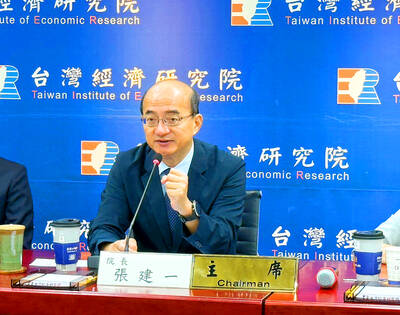
CAUTION: Right now, artificial intelligence runs on faith, not productivity and eventually, the risk of a bubble will emerge,’ TIER economist Gordon Sun said Taiwanese manufacturers turned more optimistic last month, ending a five-month streak of declining sentiment as concerns over US tariffs, currency volatility and China’s overcapacity began to ease, the Taiwan Institute of Economic Research (TIER) said yesterday. The manufacturing business confidence index rose 1.17 points from June to 86.8, its first rebound since February. TIER economist Gordon Sun (孫明德) attributed the uptick to fading trade uncertainties, a steadier New Taiwan dollar and reduced competitive pressure from Chinese producers. Taiwan’s semiconductor industry is unlikely to face significant damage from Washington’s ongoing probe into semiconductors, given the US’ reliance on Taiwanese chips to power artificial